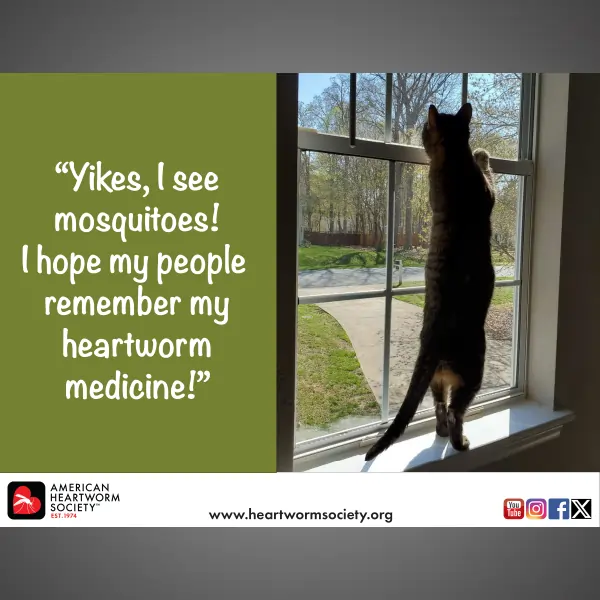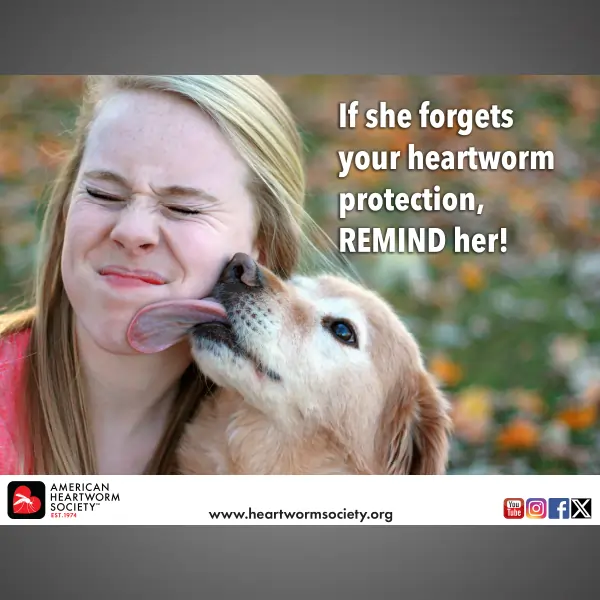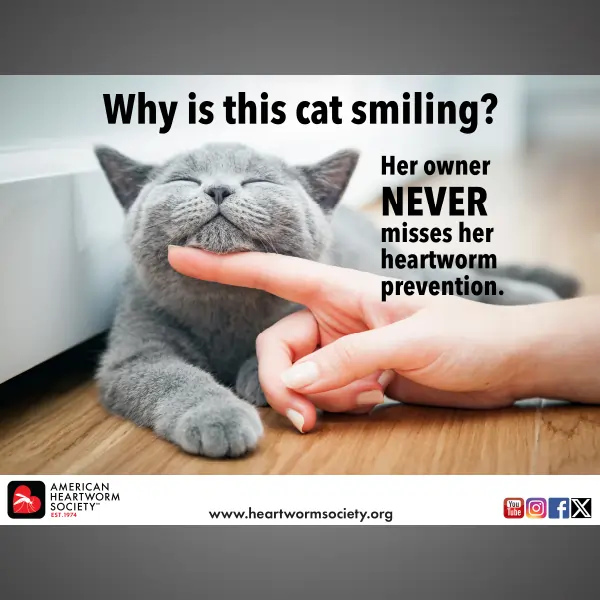CLARKE ATKINS, DVM, DIPLOMATE ACVIM (Internal Medicine and Cardiology)
Feline heartworm disease (HWD) has a low index of suspicion and is significantly under-diagnosed. Knowing when to test cats for HWD—and whether to test them—is important. The challenge boils down to this: no single test can accurately detect heartworms at all stages in cats. Thoroughly understanding the limitations of antigen and antibody tests is necessary to utilizing these assays with confidence.
Role of antigen (AG) testing in cats
In dogs, antigen tests are highly sensitive and specific. In cats, it’s a different story. While the AG test, which detects the presence of adult female heartworms, is indispensable when feline heartworm infection (HWI) is suspected, it is minimally useful in screening for adult HWI in cats. Why?
- Cats have a much lower incidence of adult HWI
- Adult worm burdens are smaller in cats than in dogs (often just one worm)
- Cats have more male-only infections, which aren’t detectable
- Cats may have clinical signs with only immature (AG-negative) infections
These limitations often lead to false-negative AG test results. Heartworm-infected cats test AG-negative 25%-50% of the time, even when symptomatic.
Role of antibody (AB) testing in cats
Antibody testing, while not a panacea, is more useful in screening cats than AG testing. A positive result on a heartworm antibody test tells the veterinarian that a cat has—or has had—a HWI; of cats positive on an AB test, 10 to 20 percent will have a mature infection. The AB test can detect larval infections with either male or female worms as early as two months post-infection, vs. the antigen test, which cannot pick up an adult infection until roughly eight months post-infection. It casts a wide diagnostic net, capable of capturing most feline infections—past or present—while assessing risk of exposure.
By using antigen and antibody tests together, veterinarians can increase the chances of accurately diagnosing heartworm infection in cats.
When trying to diagnose an adult infection, it can be useful to follow an AB test with an AG test or to use them concurrently. It is not unusual to have an AB-positive/AG-negative result in a cat with mature HWI. Since worm maturation increases the chances of a positive AG test, repeating a test in 1-2 months in suspected cases is often helpful, while heat-treating samples prior to testing can increase sensitivity. Radiography and echocardiography
can be useful second-tier tests in suspect cases.
Pre-preventive heartworm screening— necessary in cats?
Unlike dogs, heartworm-positive cats are at very low risk of developing adverse reactions from macrocyclic lactones. In fact, cats should stay on preventive, regardless of whether the test is positive or negative. Nevertheless, antibody screening enables the veterinarian to alert owners if their cats have been exposed to heartworms so that they might choose to pursue confirmation of mature infection. In addition, routine screening allows the clinician to understand the risk of heartworm exposure in his or her own practice area.
The bottom line:
because there is no approved treatment medication for HWI in cats, the only way to keep cats heartworm-free is to administer year-round prevention.
CLARKE ATKINS, DVM, DIPLOMATE ACVIM (Internal Medicine and Cardiology)
JANE LEWIS SEAKS DISTINGUISHED PROFESSOR EMERITUS
NORTH CAROLINA STATE UNIVERSITY
RALEIGH, NORTH CAROLINA








